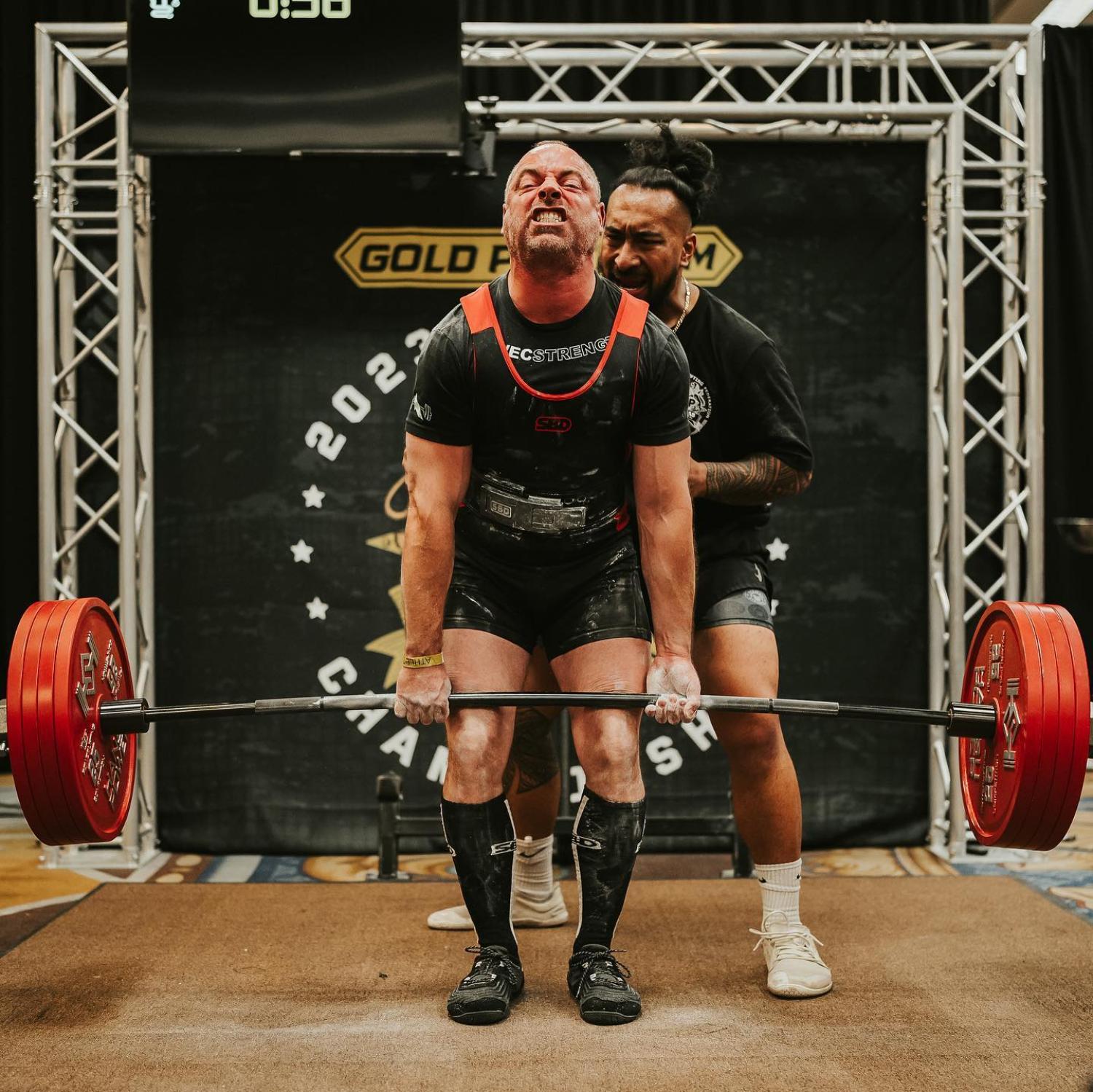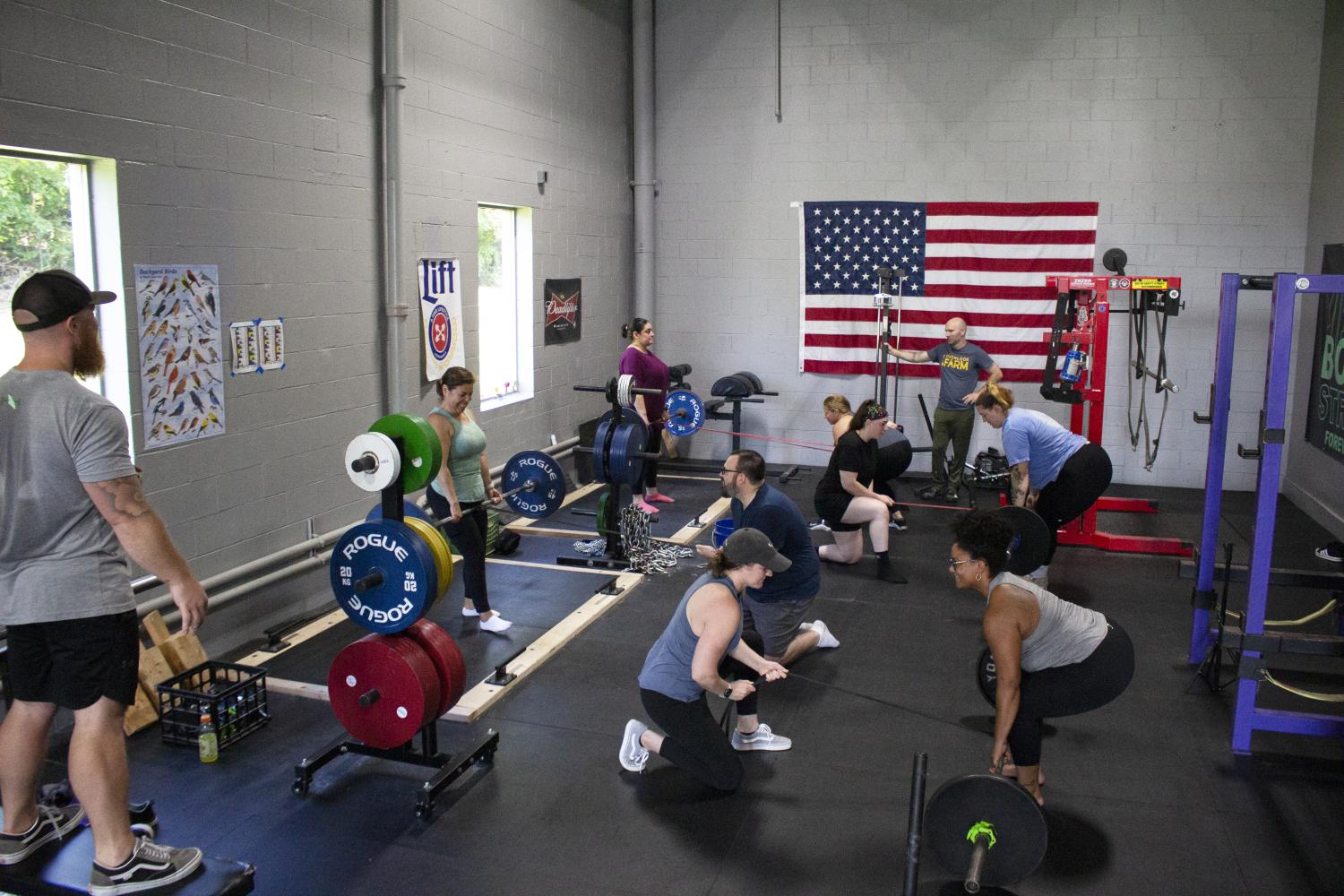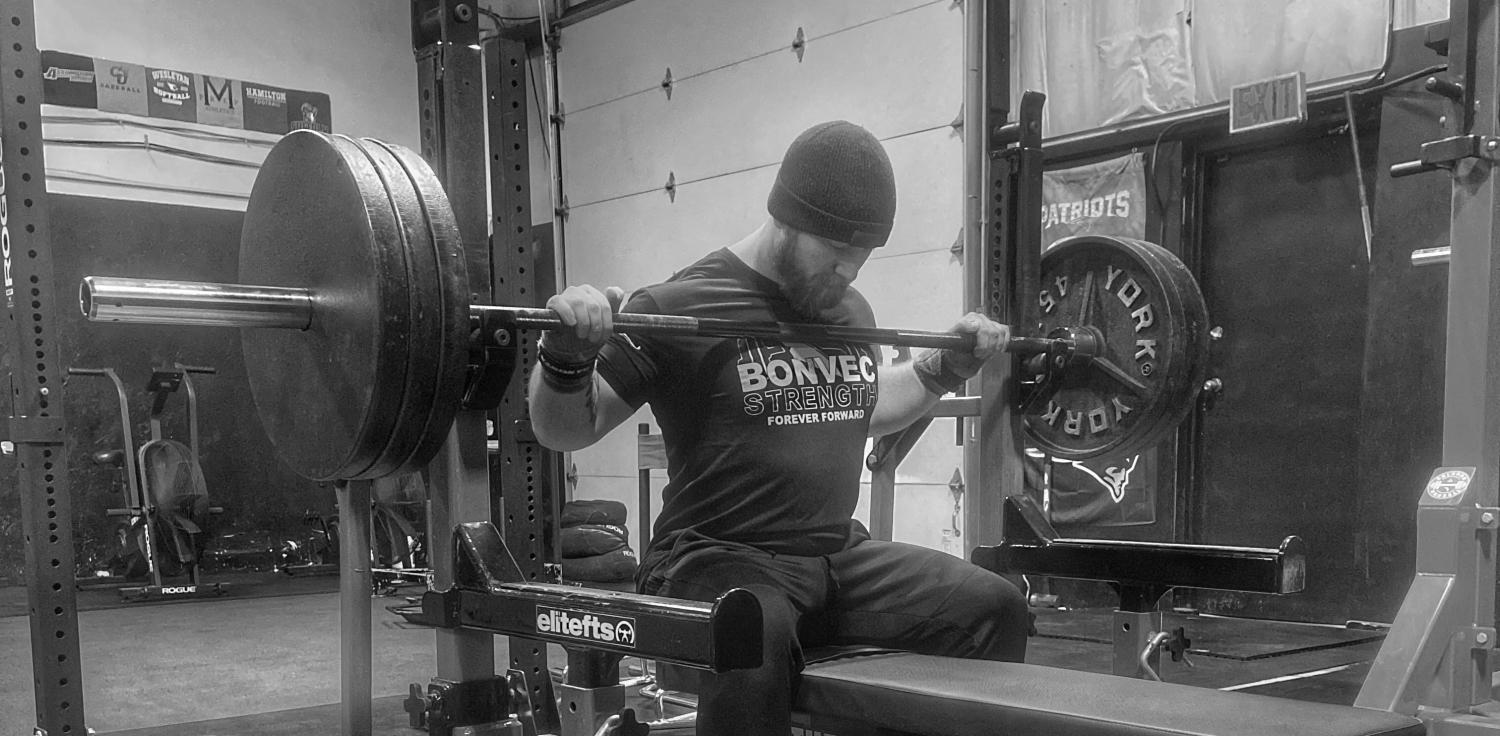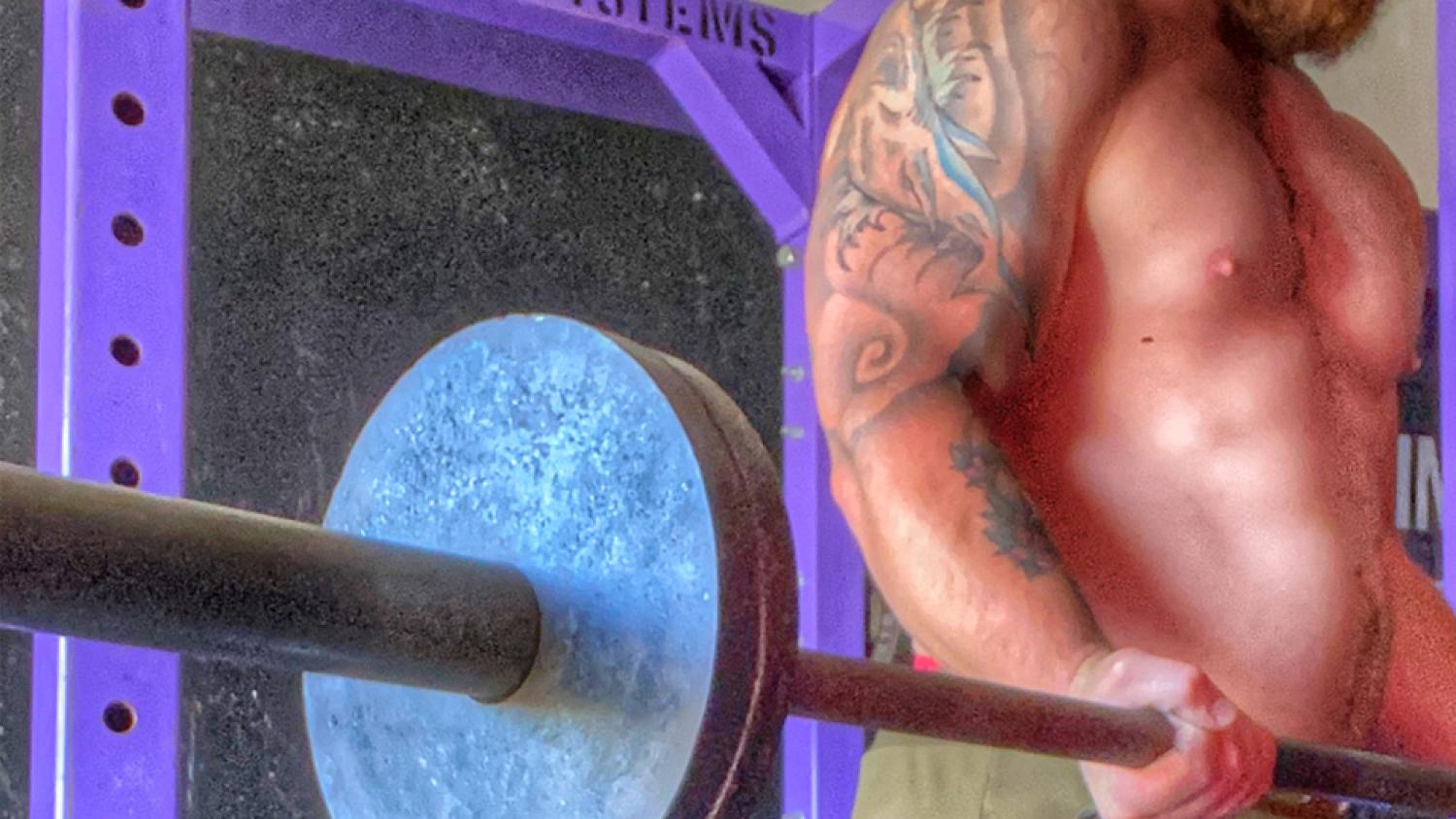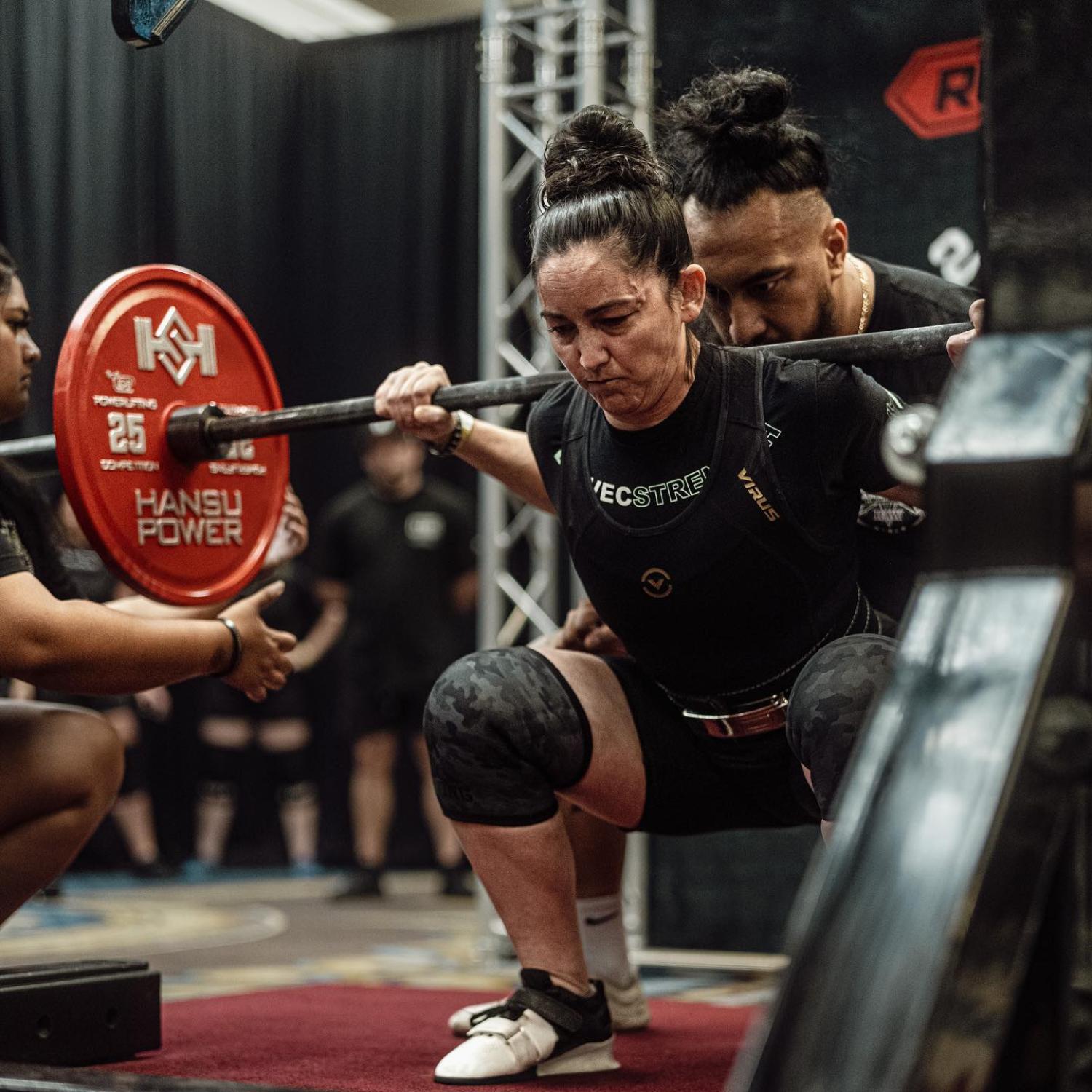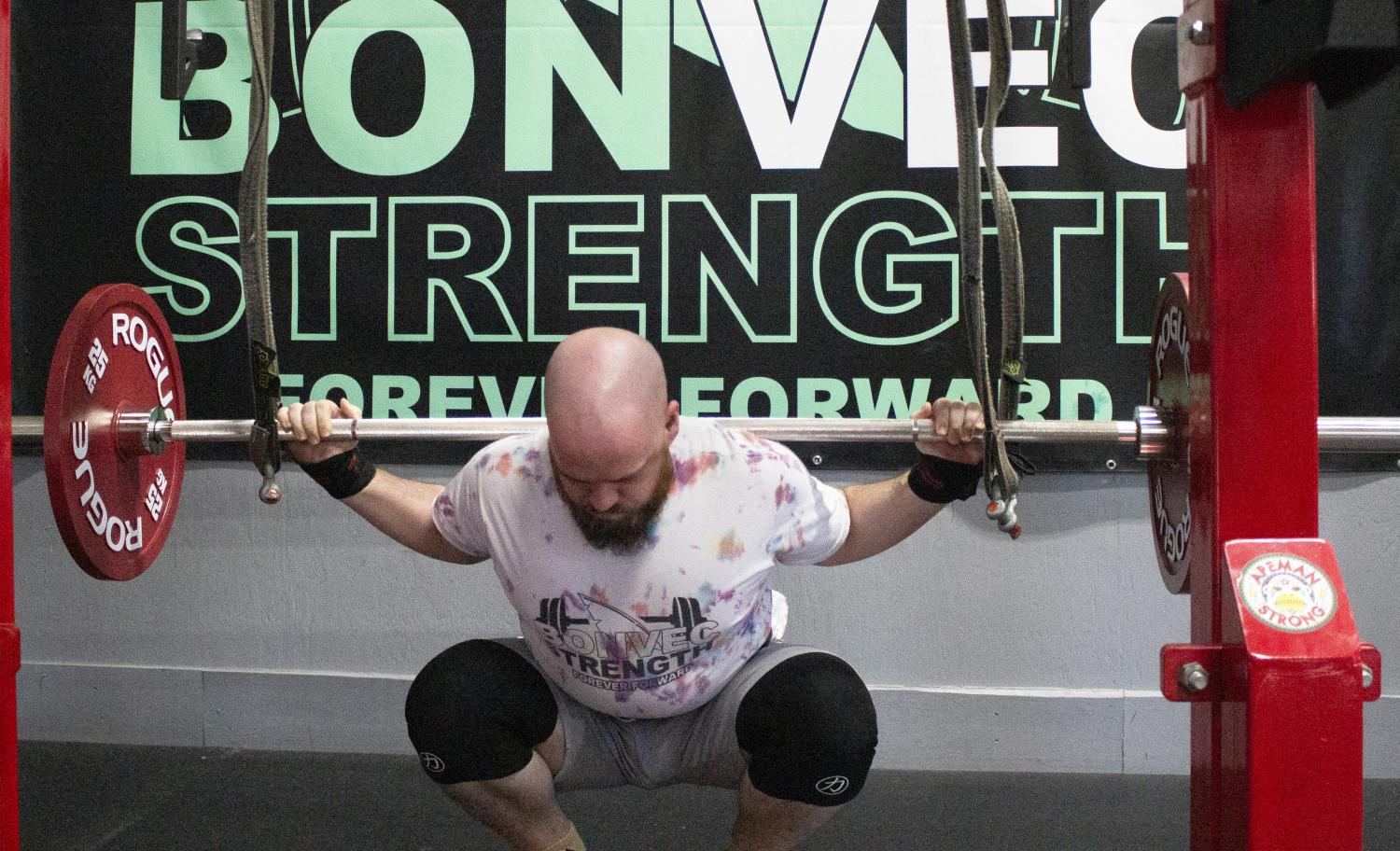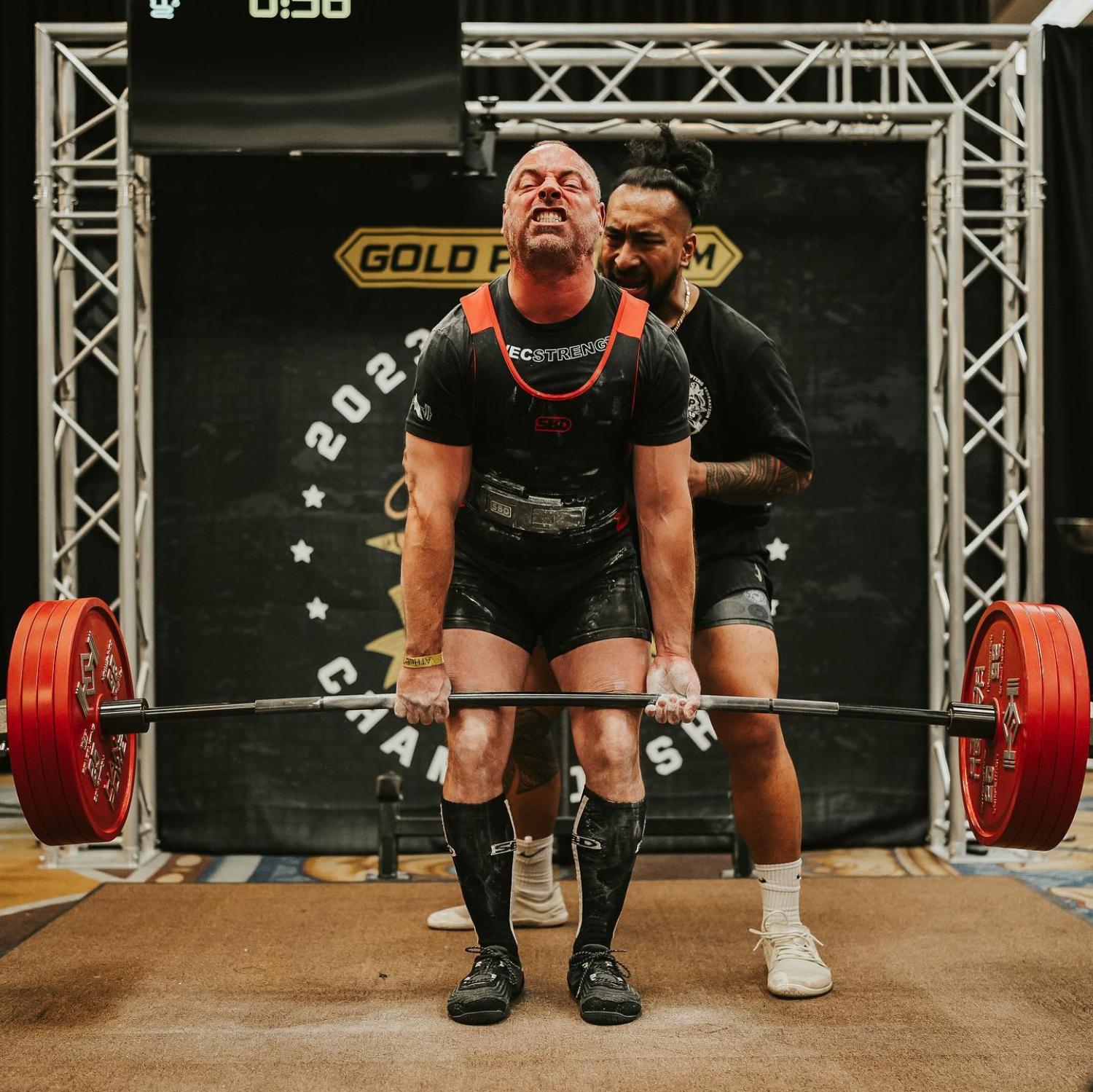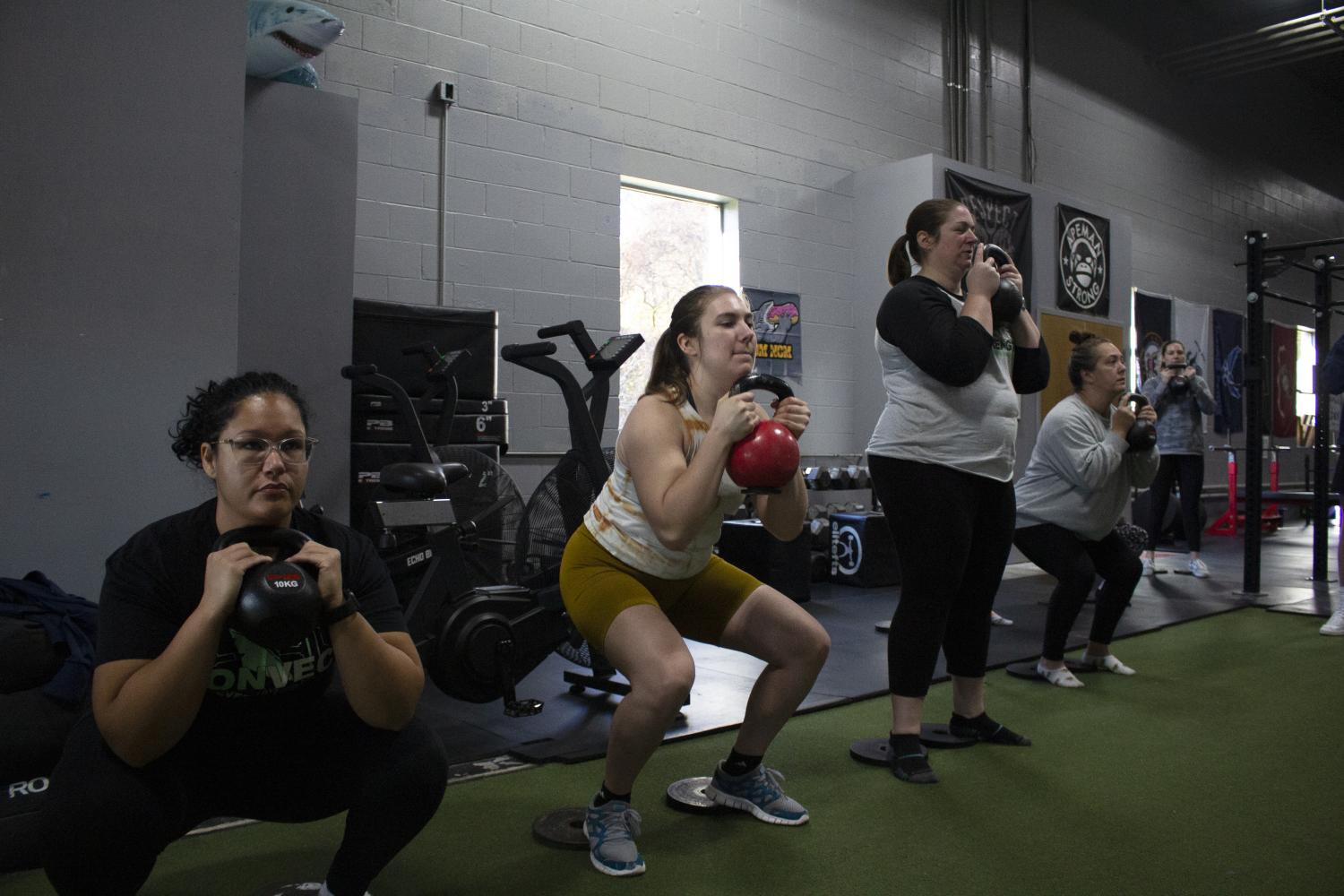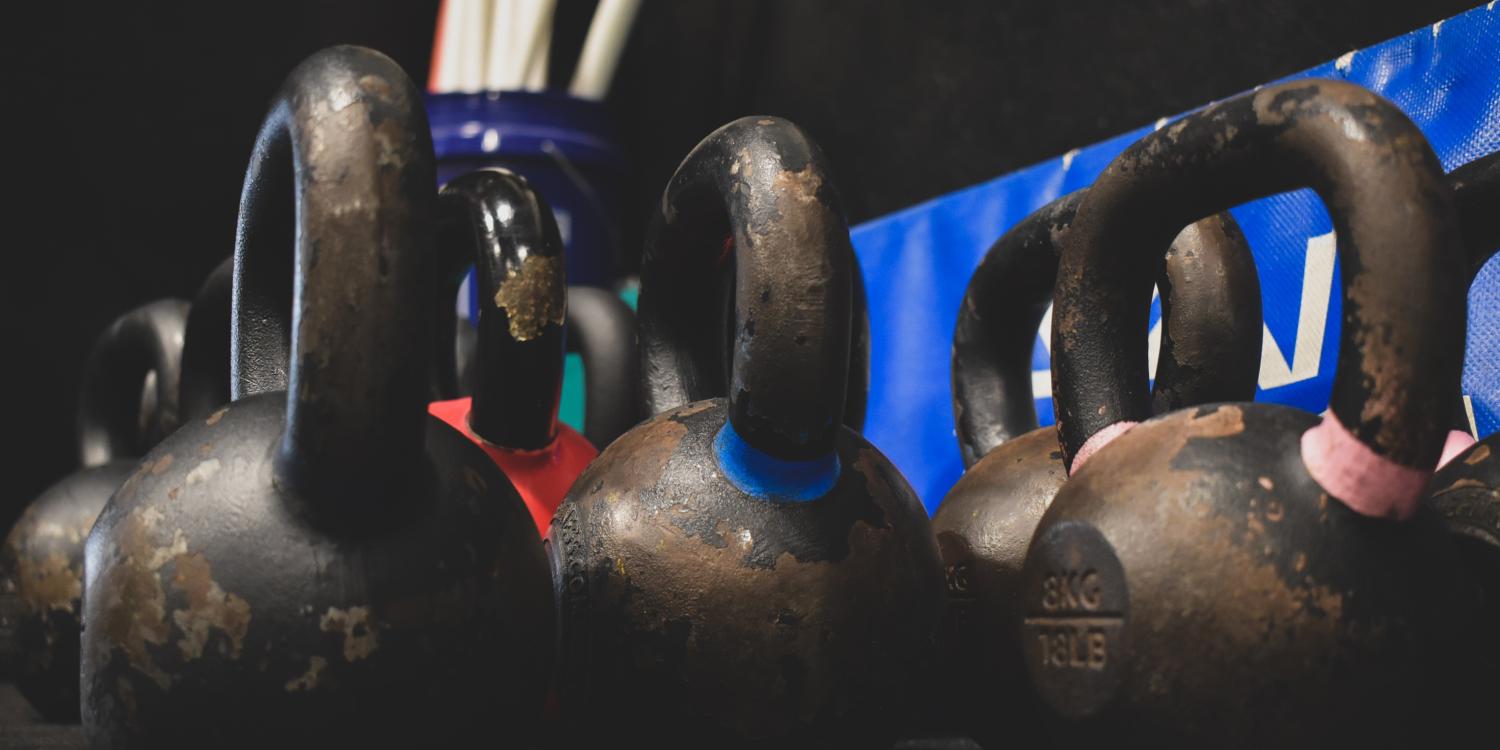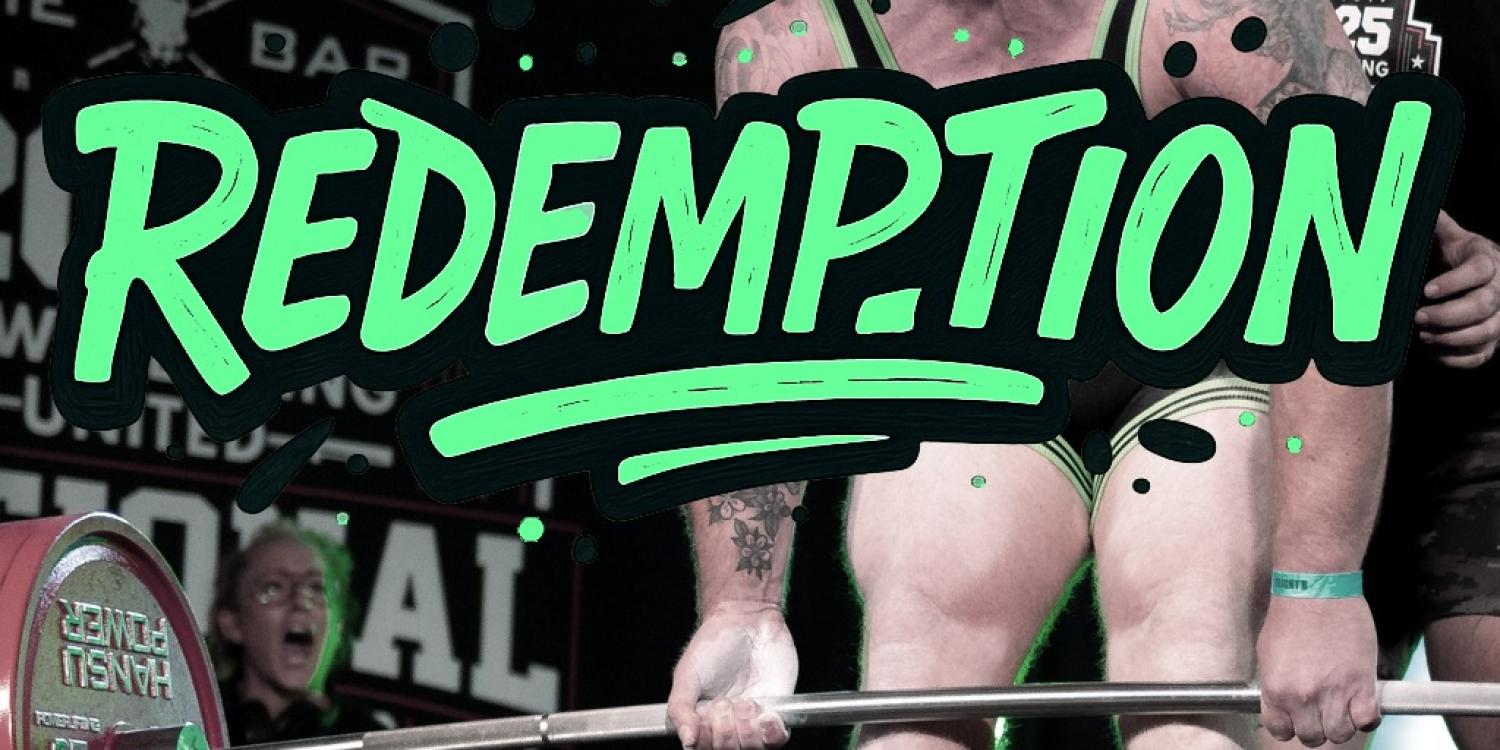
Powerbuilding
Bonvec Strength
Powerlifting, BodybuildingHave you told yourself one of these lies?
"I don't care how much I lift, as long as I'm jacked."
Or...
"I don't care what I look like, as long as I'm strong as hell."
Here's the real question:
Why do you have to choose one or the other?
Good news: you don't.
Powerlifting and bodybuilding don't have to be mutually exclusive. In fact, many of history's greatest powerlifters trained like bodybuilders in the offseason to add pounds of lean muscle. And many legendary bodybuilders also competed in powerlifting, putting their muscle to good use.
That's where Powerbuilding comes in.



Technique is a Choice
A
Technique is a Choice
Technique is a Choice If you're reading this program, chances are you already know a thing or two about how to squat, bench press and deadlift. However, you're never too strong or too experienced to work on improving your technique. At Bonvec Strength, we like to say that technique is a choice. It's completely in your power to give 100 percent of your attention and focus to your technique when you're under the bar. It's completely in your power to choose the weight on the bar based on your technical max (i.e., the weight you can lift with optimal technique), NOT simply as heavy as you can go even if your technique falls to pieces. And it's completely in your power to be a student of the iron, continually striving to learn and improve your technique. This section includes three in-depth tutorials on the squat, bench press and deadlift. Watch the videos before diving into this program so you have a clear idea of how best to perform the big lifts as safely and effectively as possible.
How to Squat
B
How to Squat
How to Squat
How to Bench Press
C
Bonvec Strength: How to Bench Press
How to Bench Press
How to Conventional Deadlift
D
Bonvec Strength: How to Conventional Deadlift
How to Conventional Deadlift
How to Sumo Deadlift
E
Bonvec Strength: How to Sumo Deadlift
How to Sumo Deadlift
Important Concepts
F
Bonvec Strength: Important Concepts
Rate of Perceived Exertion (RPE) You will select your weights for your main lifts is using Rate of Perceived Exertion (RPE). This is a subjective method of load selection that rates the difficulty of a set on a scale of 1-10, with 1 being easiest and 10 being a maximal effort. RPE-based training is a form of autoregulation, meaning that you adjust the weight on the bar based on how you’re feeling on a given day. If you’re feeling great, push for heavier weights. If you’re feeling lousy, go lighter. This gives the lifter more options than percentage-based training or simply adding weight every week, and leads to more productive training sessions overall. It takes time to learn to judge your own RPE, so you may not get it perfect at first. Most importantly, start too light. If you go too heavy right out of the gate, it will be difficult to keep adding weight to the bar over the course of 12 weeks as you approach your competition or testing day. There are two main ways to judge RPE: using “reps in the tank” or “how heavy did that feel?” The former is more objective, but doesn’t work as well for heavy, low-rep sets. The latter is more subjective, but works better for more experienced lifters and for heavy, low-rep sets. For example: Reps in the Tank 10 RPE - 0 reps left in the tank (could not have done another rep and/or any more weight despite a maximal effort) 9.5 RPE - MAYBE 1 rep left in the tank 9 RPE - Definitely 1 rep left in the tank 8.5 RPE - MAYBE 2 reps left in the tank 8 RPE - Definitely 2 reps left in the tank 7.5 RPE - MAYBE 3 reps left in the tank 7 RPE - 3 reps left in the tank ...and so on. How Heavy Did that Feel? 10 RPE - Maximal effort, as heavy as possible for the given rep range. 9 RPE - Really heavy, but possibly could have gone a bit heavier. Had to grind to finish the rep. 8 RPE - Heavy, but still plenty of strength left. Didn’t have to grind to finish the rep. Similar to an opening attempt in competition. 7 RPE - Moderate difficulty. Bar still moved fast and smooth. 6 RPE - Light, not difficult. Probably not heavy enough to make you stronger. ...and so on. Reps in Reserve (RIR) The preferred method for choosing the load and/or reps per set for your accessory and “bodybuilding” movements is to use the Reps In Reserve (RIR) method. Rather than performing a predetermined number of reps per set, you will select a weight that you believe will result in you completing the set in a certain rep range, and then perform as many reps as possible, stopping a certain number of reps shy of failure (i.e., leaving reps in reserve). This may sound similar to RPE, and it is. However, for accessory movements where the purpose is to build muscle rather than increase strength, the proximity to failure - or reps in reserve - is more important than the actual number of reps performed. For example, say you were going to do triceps extensions and you wanted to do 10-12 reps (a common hypertrophy rep range). You realize midset that the weight is somewhat easy, but stop at 12 reps with about 5 reps in reserve. Was this set productive? Probably not. Arbitrarily stopping at 12 reps leaves you too far from failure to force the body to adapt and build muscle. Rather than stopping at 12, say you intended to perform the set to 2 RIR, so you continued to do reps until you got to 15, which was difficult but felt like you have done 2 more reps if you absolutely had to. Although you did more reps than the target rep range (10-12), you stayed true to the 2 RIR assignment and finished the set close enough to failure to likely trigger a hypertrophy response. Timed Rest Periods Timed rest periods are part of what makes Powerbuilding different from other similar programs. The majority of your bodybuilding-style accessory movements will have prescribed rest periods of 60-90 seconds, and some of the backdown sets for the main barbell lifts (or slight variations of them) will have rest periods of 2-3 minutes. These short rest periods will suck, but they're part of what makes this program effective. Incomplete rest periods create the right hormonal environment for muscle growth and lets you get more benefit out of lighter weights, which in this case is a good thing because you've already pushed relatively heavy weights on the big barbell movements at the beginning of your training session. You may have noticed that seasoned bodybuilders often use weights for movements like curls, lat pulldowns, etc., that seem lighter than what even some average gym goers use. This is a hallmark of many bodybuilders' training style: the ability to get the most possible benefit out of seemingly-light weights. Whether it's via a controlled tempo, a laser-focused mind-muscle connection, or in this case, limited rest periods, high-level bodybuilders can make light weights feel heavy. This reduces wear-and-tear on the joints while still building muscle, making for a long and productive training career. Science alert: when you do a challenging set, rest for a fixed amount of time, and then perform another set before the muscle is fully recovered, you create a localized buildup of lactate (a byproduct of energy production during intense exercise that creates that uncomfortable burning feeling) and metabolic byproducts that signal your muscles to grow. Basically, a huge pump in your muscles in the second-most reliable way to force them to grow, second only to progressive overload (i.e., lifting more weight and/or doing more reps than you've done before). If you rest too long, your body buffers that lactate and those byproducts away from the working muscles and your training effect is blunted.
How to Use This Program
G
How to Use This Program (Powerbuilding)
How to Use This Program Powerbuilding was designed to simultaneously build maximal strength and muscle size by blending the best training methods of bodybuilding and powerlifting. However, any program is only as good as the execution by the person following it. Make sure you read this section thoroughly to produce the greatest possible results. STEP 1 – Make sure that you are healthy enough to exercise. If you’re injured, unfortunately this program isn’t for you. Your doctor or physical therapist can tell you if you’re ready. STEP 2 – Read the whole program. It’s important to read everything so you know what you’re doing once you hit the gym floor. STEP 3 – Commit to training 4-5 days per week for at least 90 minutes, if not longer. STEP 4 – Go to the Exercise Database section and watch the exercise demonstration videos. Every single exercise in this program has an instructional video where we walk you step-by-step through proper technique to ensure safety and maximum results. STEP 5 – Start Week 1 and do your first training session. Get under the bar and get it done! STEP 6 – Write down the weights, sets and reps of every exercise on the workout sheets provided. This will help you track your progress and ensure that you’re appropriately challenging yourself each workout. STEP 7 – Go home, eat some good food and get some rest. Quality nutrition and sleep are your 2 strongest weapons in your fight for maximal strength. STEP 8 - Repeat steps 5 through 7 until you’ve completed the 12-week program. STEP 9 – Let us know how you did! We’re always happy to listen, help and celebrate your progress with you. Feel free to reach out to us on social media with questions, concerns or comments.
Training Schedule
H
Training Schedule (Powerbuilding)
Training Schedule Powerbuilding uses a 5-day-per-week routine that will yield excellent results if you put in the work. Outlined below are two different ways you can lay out your training week depending on your schedule. None of the setups are perfect or necessarily better than another. What's most important is that you get in all your training days every week. The days are listed as if your training week starts on Monday, but this is only for example and your training week can start on any day as long as the training days and rest days are separated accordingly. Option 1 Monday: Day 1 - Bench Press Tuesday: Day 2 - Squat/Deadlift Wednesday: Day 3 - Upper Back Thursday: Off Friday: Day 4 - Bench Press Saturday: Day 5 - Deadlift/Squat Sunday: Off Option 2 Monday: Day 1 - Bench Press Tuesday: Day 2 - Squat/Deadlift Wednesday: Off Thursday: Day 3 - Upper Back Friday: Day 4 - Bench Press Saturday: Day 5 - Deadlift/Squat Sunday: Off If possible, don’t train more than three days in a row or take more than one day off in a row. Also, don't train lower body twice within a 72-hour period. This allows for optimal recovery between workouts but also encourages consistency.
A
Close Grip Bench Press
2 x 5
B
Bench Press
C
DB Pause Floor Flyes
D
Neutral Grip Lat Pulldowns
E
Banded Tricep Pushdown
4 x 20
F
Alternating DB Hammer Curl
G
Juarez Valley Push-Ups
A
Back Squat
2 x 5
B
Hatfield Squat
C
Trap Bar Deadlift
D
Lying Leg Curl
E
Reverse Crunch
A
Wide Grip Pull Ups
B
1-Arm DB Row
C
Seated Cable Row
D
DB Bicep Curls
A
Overhead Press
3 x 5
B
Close Grip Bench Press
3 x 5
C
DB Tricep Extension
D
Hang-and-Swing Rear Delt Destroyer
A
Back Squat
3 x 5
B
Deadlift
2 x 5
C
Deadlift
4 x 3
D
DB Walking Lunges
E
Ab Wheel
 Tony Bonvechio
Tony Bonvechio
Elite-level powerlifter with over a decade of coaching experience. Master's degree in Exercise Science. Mediocre fisherman, craft beer enthusiast and world's biggest Metallica fan.


If you want to get jacked, get strong and actually look like you lift , sign up today!
Get Powerbuilding
 Randy K
Randy K
All-Time PRs in all 3 Big Lifts
Verified Athlete"In my first block I set new all-time PRs in all of my big lifts. My bench jumped 5 lbs and I finally hit 275 with a competition style pause, my squat max jumped 10 lbs, and my deadlift max jumped 10 lbs. This was just a few months after my last meet, where I had my best performance ever."
 James G
James G
A Fun Program ... Absolutely Saw Results
Verified Athlete"I'd never experienced a training program that combined heavy, low rep strength training with high-rep hypertrophy training. It's a fun program and I absolutely saw results in all my lifts across the board, most notably my bench press, and saw significant improvement in my squat and deadlift too."
 Steve F
Steve F
Gained Confidence in All My Lifts
Verified Athlete"This program mixes the training up just enough to keep it interesting but keeps my powerlifting goals in mind. I've hit more rep PRs than I ever have and singles at 90% and above felt easier than they have in the past. What I’ve gained the most from the program was confidence in my big lifts."



